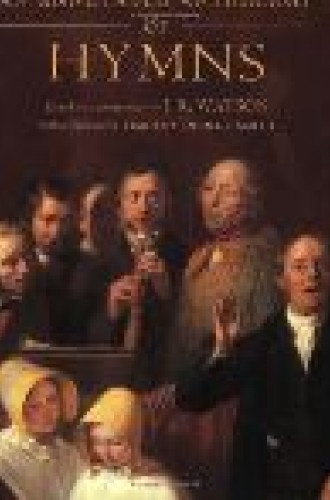An Annotated Anthology of Hymns
Hymns are “important in the history of ideas, the formation of culture, and the inner life of individual readers,” J. R. Watson reminds us in this time when the disciplines of hymn writing and singing are undervalued by many Christian worshipers. Watson selects 250 English hymns he finds exemplary and explores the impact of this unique art form on the collective Christian soul.
The anthology is a companion piece to Watson’s widely acclaimed The English Hymn: A Critical and Historical Study (1997). An emeritus professor of English at the University of Durham, England, he has served on the committee for the English collection Common Praise (2000) and has undertaken the monumental challenge of editing a replacement for Julian’s Dictionary of Hymnology, a standard reference work for hymnologists.
Starting with ancient and medieval texts translated into English, mostly during the 19th century, Watson wends his way through various periods of English church history. Isaac Watts and Charles Wesley each receive full chapters. Representative work by other notable writers are complemented by important works by less-known authors. Anne Steele, Catherine Winkworth, Cecil Frances Alexander, Frances Ridley Havergal, Christina Rossetti, Frances Van Alstyne (Fannie Crosby) and other women writers are included. Each chapter is headed by a brief essay describing characteristics of the historical period covered.
Watson gives the versions of hymns that English churchgoers sang from their hymnals, rather than the hymn writers’ original formulations. Many of the hymns have been edited over the years. Verses have been omitted because of theological or political problems that rendered them inappropriate for congregational worship.
Annotations briefly trace the publication history of each hymn, include original verses removed from congregational use, give biographical information about the author and provide textual interpretation when the sense is not immediately evident. The hymn tunes frequently paired with the texts are listed with a brief publication history.
One wishes that Watson had brought his literary interpretation skills to bear in more of the annotations by pointing out aesthetic features of the text, thus enhancing readers’ appreciation of the authors’ craft and theological insights. Redundancies occur in numerous annotations—a clue that Watson assumes readers will seek out individual hymns rather than read whole chapters at a time.
The hymns discussed are or have been well known by English Protestants, but North Americans may not recognize all the English tunes cited. A source like Hymns for Today’s Church or Hymns Ancient and Modern will be of great service to those wanting to experience the full effect of text and tune combinations.
The book contains several hymns written for children, among them “All things bright and beautiful,” “Once in royal David’s city” and “There is a green hill far away.” Cecil Frances Alexander created these hymns to illustrate different articles of the Apostles’ Creed. They are demanding hymns of durable quality and craft. I hope hymn writers are still creating work with such a high view of children and their capacity for theological understanding.
About 80 of the hymns use the pronouns “I” or “me.” In the majority of these, “I” appears in the first or second verse or in the last verse; it does not dominate the hymn. About 100 hymns use the first-person plural pronouns “we” or “us,” and about 65 either describe something about God or are addressed to the singers (“you”). With “I” and “me” talk dominating so much contemporary worship and daily life, reading hymns that assume our collective experience as Christians is refreshing.
Masculine references to God, male language that assumes female experience, and archaic language pervade the collection. Watson notes that many of his examples are not suitable for contemporary hymnals because they present theological or political problems. The task of refashioning well-crafted old hymns into a present-day idiom requires extreme sensitivity, deep respect for the hymnists’ original work, and poetic skill. Many current revisions fall short of their original genius.
This anthology keeps us from forgetting those hymns that aid devotion and expand the expressiveness of the soul. I encountered hymns that had been pushed to the outer regions of my memory because they are not in fashion. New discoveries opened my mind to fresh insight and my heart to greater freedom. That is the enduring value of such a repository of inspired human achievement.





